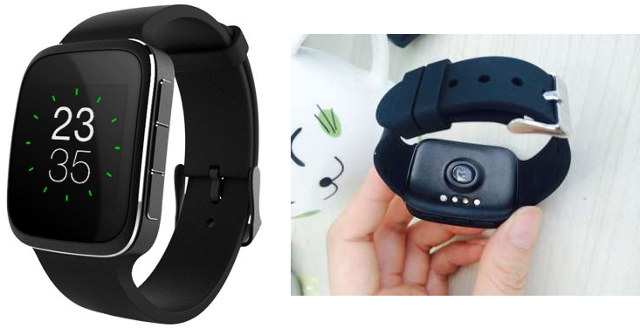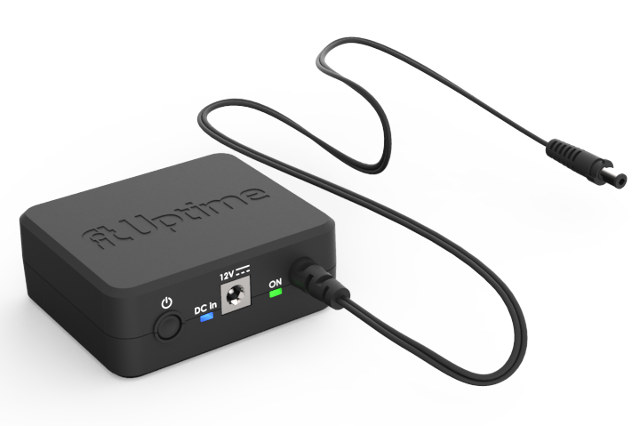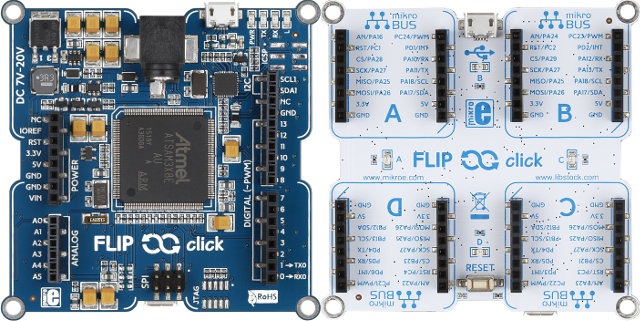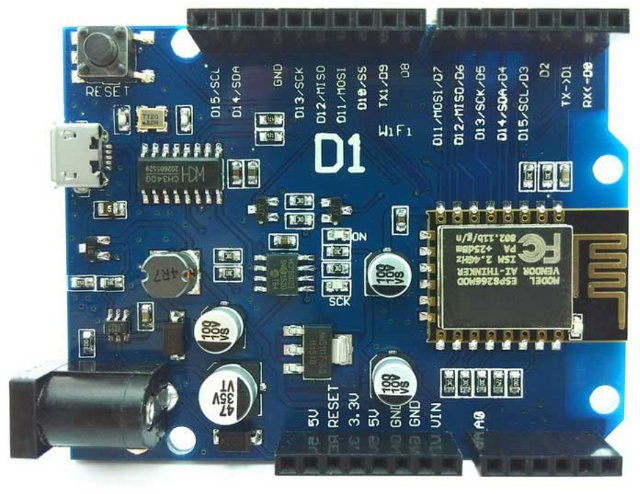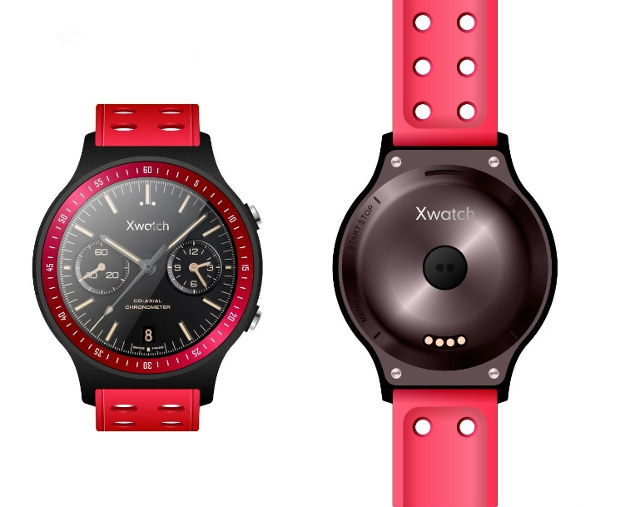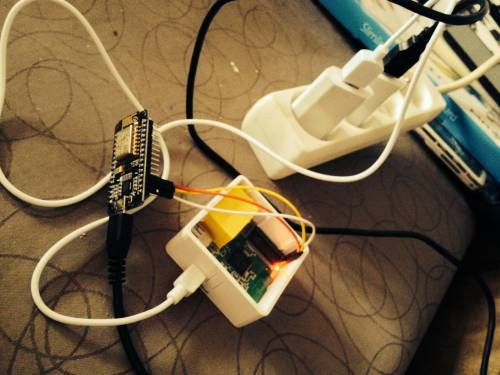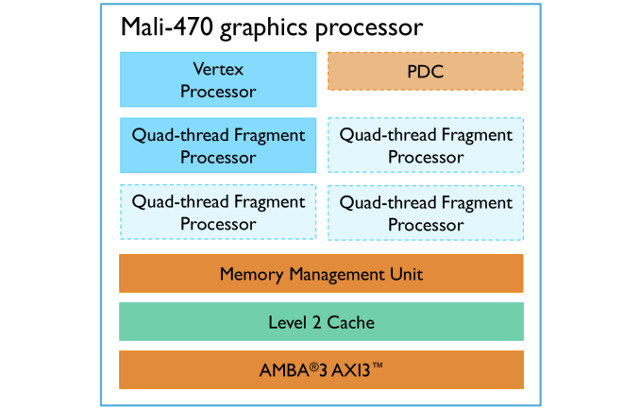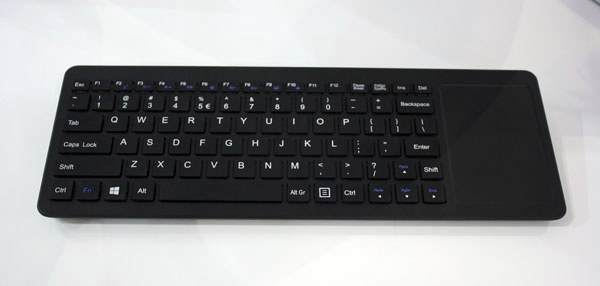My Vidonn X5 activity tracker died on me a few weeks ago about over a year of service. While it was useful to keep me active thanks to its “steps” counter, I realized I was not a big fan of OLED displays as they aren’t turned on all the time in order to save power, and are hard to read when there’s a strong sunlight, the battery did not last that long (about 2 days), and using motion sensors to evaluate activity is not that accurate. So I’m interested in wearables with always-on displays, readable in sunlight, that don’t suck too much battery (e.g one charge per week), and with a strapless heart rate monitor. The first three are normally only achievable with E-Ink or E-Paper displays and the latter have become much more common thanks to electro-optical heart rate monitors. I’m also a budget conscious guy, so I’d like […]
Compulab fit-Uptime is a 12V mini UPS for Intel NUCs, fit-PCs, and More
Power failures can cause loss of data, or if you are unlucky even brick your devices, and for business users there may be a maintenance cost. UPS (Uninterruptible Power Supplies) prevent those issues by providing power when the mains fail, and while they are relatively inexpensive, they are quite bulky. That’s probably Compulab designed fit-Uptime a mini UPS taking 12 to 19V input and outputting 12V to keep mini PCs such as the company’s fit-PCs or Intel NUCs for a couple of hours. fit-Uptime specifications: Capacity – 18 watt hour Input: DC 12V to 19V Output on battery – DC 12V / 5A Output when powered – 12V to 19V (same as input) / 5A Battery – Lithium polymer built-in non-replaceable (good for up to three hours) Dimensions – 6.8 cm (l) x 8 cm (w) x 3.2 cm (h); Power jack: 5.5mm x 2.5mm barrel Weight – 240g The […]
Flip & Click Board with Atmel SAM3X8E MCU Features 4 mikroBUS Sockets & Arduino Headers
HummingBoard Gate introduced last month was the first board I saw with a mikroBUS socket that can be used with over 150 “Click boards” by MikroElektronika adding functionalities such as sensors, OLED displays, relays, servos, and so on. But if you project don’t quite need the power of a full featured Linux board, or you simply prefer working with the Arduino IDE, MikroElektronika has just launched Flip & Click board powered by an Atmel SAM3X8E Cortex-M3 micro-controller and featuring four mikroBUS sockets on the back of the board, as well as Arduino compatible headers on the top. Flip & Click board specifications: MCU – Atmel AT91SAM3X8E Cortex M3 micro-controller @ 84MHz with 512 KB flash, 100 KB SRAM (64+32+4), also used in Arduino Due. Expansions Headers Arduino UNO compatible headers on the top 4x mikroBUS socket on the bottom USB – micro USB port for programming and power Misc – […]
$9 ESP8266 D1 Board Features Arduino UNO Headers
We’ve already seen the Arduino IDE supports ESP8266(-EX) WiFi SoC, and some companies have designed Arduino shields for ESP8266 modules, but so far I had never seen an ESP8266 board with Arduino UNO form factor supporting Arduino shields, and that’s exactly what showed up in DX new arrivals RSS feed with a white label ESP-12E UNO board selling for $11.75 including shipping. The “D1” board has the following specifications: ESP8622 Module – AI-Thinker ESP12-E module (as found in NodeMCU) based on ESP8266-EX SoC @ 80 or 160 MHz with 4MB flash Connectivity – 802.11 b/g/n with PCB antenna. Supports station / softAP / SoftAP + station modes, WPA/WPA2 security. I/Os 11x Digital I/O pins 1x Analog Input pin I/O logic level: 3.3V ADC pin (A0) input voltage: 0-3.3V Debugging – Via micro USB using CH340G USB-TTL serial chip Misc – Reset button Power Supply – 6-24VDC via DC jack, 5V via […]
Bluboo Xwatch is an Android Wear Smartwatch Powered by Mediatek MT2601 SoC
So far, we’ve only seen Android Wear devices by large companies such as Motorola, LG, or Huawei, simply because you have to sign an agreement with Google in order to be allowed to load Android Wear on your device. Last year, a startup launched their own “Android Wear” watch on Indiegogo, but when Google found out the campaign got pull out since it was not going to happen. But the situation may have changed since then, as I’ve been contacted by Bluboo, which should be brand from Shenzhen Huihua Exploit Technology Co., Ltd, about their upcoming Bluboo Xwatch sports smartwatch running Android Wear, and the company confirmed they were “working with a third-party company to help them get this agreement”. I’m guessing/hoping the third party company might be Mediatek themselves. Bluboo Xwatch preliminary specifications: SoC – Mediatek MT2601 dual core ARM Cortex A7 @ 1.2GHz with ARM Mali-400 MP GPU […]
How to Use an ESP8266 Board as a WiFi to Serial Debug Board
Telnet and SSH are great to access a Linux device, machine and computer remotely when they are already running, but when you are working on the bootloader and/or kernel themselves, you’ll have to use a serial port to access the terminal / serial console. Boards used to get an RS232 port which you connected to your computer with a NULL modem cable, but these days, most boards and devices expose TTL signals and require a USB to TTL debug board to access the console via a USB cable. If you only have one device close to you computer that’s fine, but if your testbed is a little further. or you need to access the serial console on multiple boards you could consider using ESP8266 module to export the terminal over WiFi. This is exactly what Zoobab did above with a GL.inet router running OpenWRT and NodeMCU board with ESP-12(E) module […]
ARM Introduces Mali-470 GPU for Wearables, IoT and Embedded Applications
Mali-400 was announced in 2008, and since then has been used in various SoCs for smartphone, but now it’s mostly replaced by Mali-450 GPU in low cost mobile and STB SoCs, although Mali-400 is still being implemented in new SoCs such as Rockchip RK3128 processor. ARM has been working on a lower power version of the GPU, and just unveiled Mali-470 GPU targeting wearables, as well as embedded and IoT applications. Mali-470 GPU is said to use the same memory and AMBA interfaces as Mali-400, while keeping some of the improvements brought to Mali-450 GPU, and further lowering power consumption to just half of that Mali-400 in terms of mW per frames per second. Just like its predecessors, Mali-470 supports OpenGL ES 2.0, and like Mali-400 it will scale from 1 to 4 fragment processor, always combined with one single vertex processor. Mali-470MP1 is likely to be used in wearables […]
PiPo K1 is a Windows 10 Bay Trail Keyboard PC
Once upon a time keyboard computers were very popular, and some companies have tried to bring keyboard computers back to market in the last few years with limited success. PiPo is giving it a try too with PiPo K1 keyboard PC powered by an Intel Atom Bay Trail processor. PiPO K1 preliminary specifications: SoC – Intel Atom Bay trail processor (likely Z3735F or Z3736F) System Memory – 2GB Storage – 32 or 64 eMMC + micro SD port Keyboard – QWERTY with multi-touch touchpad Video Output – HDMI and VGA Audio – Stereo speakers Connectivity – Ethernet and WiFi USB – 2x USB host ports Misc – Power button Battery – Maybe… Power – TBD The keyboard should be pre-installed with Windows 10, and the touchpad support gestures like pinch and zoom. There may also be a battery to be able to use the keyboard from the sofa while connected to […]


